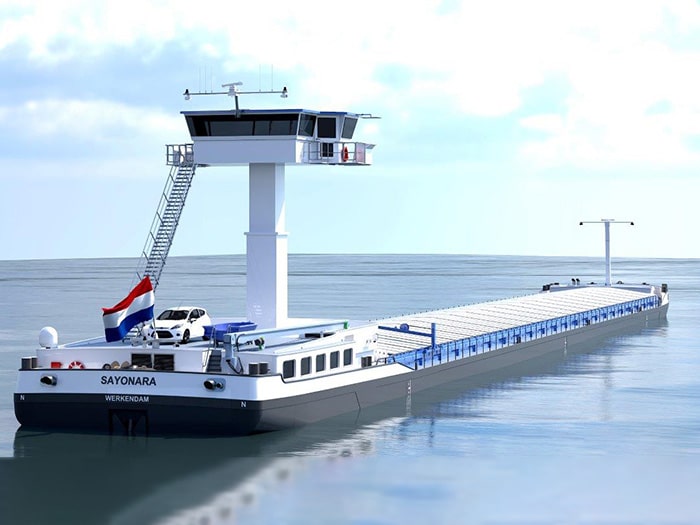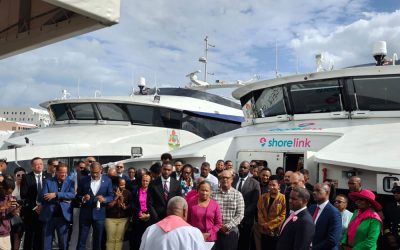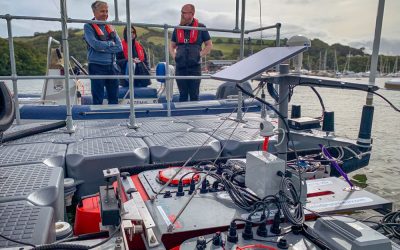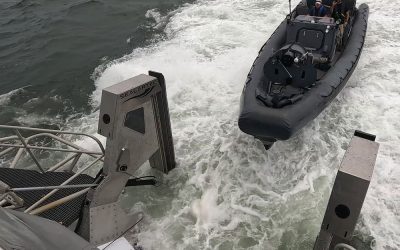Concordia Damen’s optimised hull design ready for low water levels
Transport along Europe’s inland waterways is vital to trade, with the river Rhine one of the continent’s busiest waterways. Part of the Rhine-Alpine corridor, the 1,232km-long river runs from the Swiss Alps through Liechtenstein, Germany, Austria, France and the Netherlands.
In recent years the Rhine has experienced severe low discharge extremes which have impacted the river’s transport capacity for periods of several months, causing shortages of source materials and fuels in regions far inland. Prolonged droughts of this magnitude are not uncommon historically, but concerns have been raised that climate change may further increase their frequency and severity. This and developing environmental regulations will likely have a considerable bearing on future vessel design.
Back in 2020, in a nod to its proven ability to build efficient and sustainable ships and experience in building vessels with a shallow draught, Dutch shipyard Concordia Damen was commissioned for 40 ‘eco-friendly’ inland dual-fuel tankers, to be chartered by Shell, operated by VT Group/Marlow and used to transport mineral oils between Antwerp, Amsterdam, Rotterdam and various Rhine destinations. The 110m-long and 11.45m-wide so-called Parsifal tankers have a low-emission LNG propulsion system and extreme shallow-draught capabilities – 2,875tons of freight on a 3.25m draught – to maximise cargo capacity on the sometimes precariously low water levels on the Rhine network.
Concordia Damen naval architect Pieter Baggerman tells The Naval Architect that the company’s in-house design takes into account the different water levels and current speeds along the entire Rhine corridor between Rotterdam and Switzerland and that the ship can even sail with an empty draught of 1.15m. “Extensive CFD calculations were carried out to achieve the most efficient hull shape and optimal speed-power curve, resulting in low hull resistance in combination with high displacement and shallow water possibilities,” he says.
“We see changes coming, understand what they mean and can thereby process them quickly and effectively in our services,” adds Concordia Damen CEO Chris Kornet. “The Parsifal tankers represent a new generation of eco-conscious vessels that will play a significant role in the maritime energy transition.”
The ship reaches a high speed with relatively low power: more than 22km per hour with 2 x 500kW engines.
The first vessel of the 40-vessel project, Blue Marjan, was delivered in December 2021 but following the Russian invasion of Ukraine in February 2022 and spiralling prices for LNG as a marine fuel, the number of vessels in the series was shortened and so far just 11 of the tankers have been delivered.
However, the Parsifal design has caught the eye of other shipping companies in recent months. In January, inland navigation entrepreneur Luit Nanninga commissioned Concordia Damen to build and equip a version for his Zwijndrecht, Netherlands-based company, Quinto Scheepvaart. For Quinto, the order also marks the switch, after 25 years, from container shipping to tanker shipping.
Nanninga notes that Quinto had been planning to go into tanker shipping for some time. “We came to Werkendam [Concordia Damen’s hometown] for repairs and were interested in the Parsifal tankers,” he says. “After a conversation with Chris Kornet, we visited the shipyard and viewed the ships. What particularly appealed to us was that this type was designed in such a way that it combines low resistance and a shallow draft with a large cargo capacity. This makes the ship more efficient and the transport per ton also more environmentally friendly.”
He adds: “Another advantage is that smaller propellers can be used, which is very useful when the river is low – something happening a lot these days. We quickly came to the conclusion that this barge was a good fit for us. Both my sons then went on a trial run, after which we decided to make a contract for construction and finishing. Of course, we have a number of specific wishes and we have had good discussions about them. Concordia Damen nicely picked up on our wishes and adapted their basic design accordingly.”
The stern side installation of Quinto’s tanker will be split into two ‘houses’; a house for the family and a house for the crew. CCM3, part of Concordia Damen Shipbuilding, has been chosen for the installation and finishing of the vessel.
Pieter Baggerman notes that Parsifal tankers are designed in such a way that the type of propulsion per ship can be adapted to the wishes of the customer: diesel-electric, diesel-direct or LNG-electric. Quinto’s ship will sail with Caterpillar engines and is Stage V compliant. The tanker is expected to be delivered within a year, in December 2023.
Dry cargo design
The Parsifal’s optimised hull shape has also attracted the attention of Dutch inland shipping company Amer Shipping. With a fleet of 57 vessels, including owned tankers, dry cargo and container vessels as well as associated ships, the company is active in the Netherlands, Belgium, Germany and Switzerland and transports approximately 8 million tons of cargo per year, mainly raw materials for construction projects and project cargo for various industries. It recently placed an order with Concordia Damen for two ‘CDS Dry Cargo 110’ vessels.
“The design of the lower section is the same as that of our Parsifal tankers,” says Baggerman. “It works really well and so we have applied the same design principles to our container and bulk carriers and with the same results.”
This was a decisive factor in Amer Shipping’s choice. Peter Buijks, the company’s co-owner, says: “The CDS Dry Cargo 110 transports no less than 200tons more cargo compared to the existing ‘110’ in our fleet. At the same time, fuel consumption and emissions are reduced due to the low resistance. In addition, we can continue sailing with it for longer periods in water levels of 1.15m, although the ship is of course not fully loaded in those circumstances.”
Buijks adds that in Germany there are not only draught restrictions, but also numerous waterways spanned by low bridges. “Due to the favourable air draught of these ships, we can sail under bridges of 4.3m with a draught of 2.5m. This way we can continue to do business in a responsible manner in different circumstances,” he says.
Amer Shipping’s vessels will be fitted with Stage V engines and shaft generators to ensure that the energy supplied by the propeller shaft during journeys is not lost. This energy will be used for the general power supply onboard. Energy is also fed into a 48-battery system which provides energy to the living quarters and spud poles for at least 12 hours. This solution makes a generator (65kW) largely superfluous and saves 10l of gas oil per hour, according to Buijks.
Buijks explains that Amer Shipping’s customers are increasingly looking at their CO2 emissions and that the company has been working on making its daily operations more sustainable for a number of years. “The two bulk carriers are based on Concordia Damen’s Parsifal tankers and a lot of research has been done on them, such as speed versus fuel consumption, resistance and future adaptability. These ships fit in well with that goal,” he says.
What was also really important to Amer Shipping was short delivery times. “Since we started building some of our proven designs in stock, we can deliver faster. In this case, we expect deliveries in June and the end of 2023,” concludes Baggerman.




